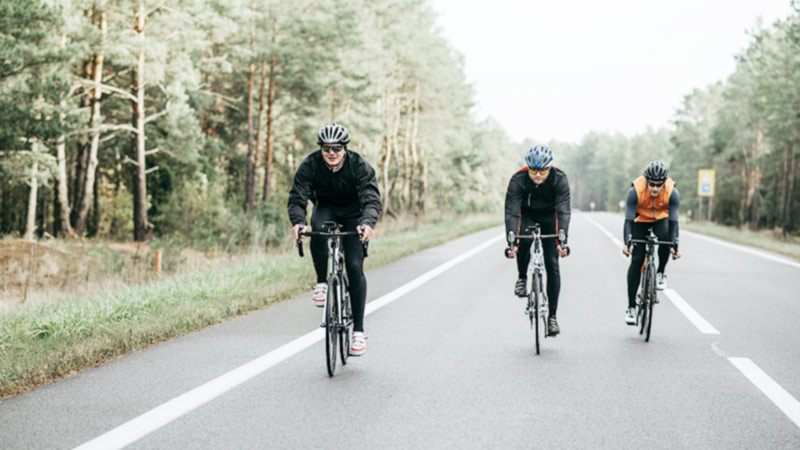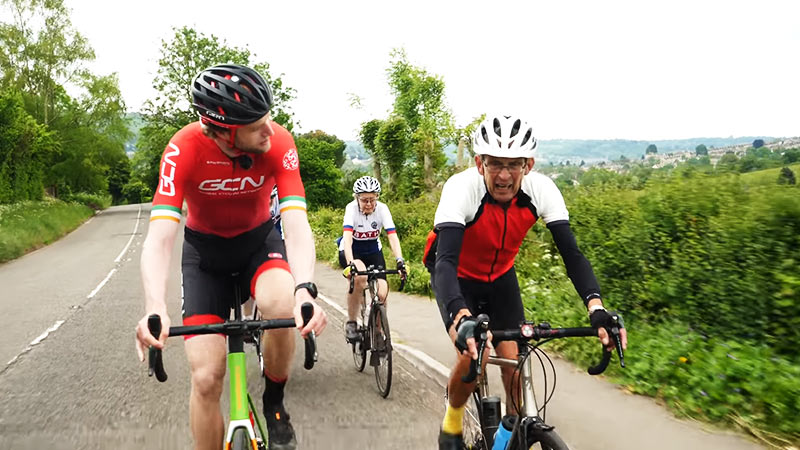Cycling is a timeless activity that offers a wide range of physical, mental, and social benefits. From the joy of the wind in your hair to the health benefits of regular exercise, cycling has something to offer everyone, regardless of age.
But at what age should you start cycling, and is there an age when you should stop? In this blog post, we’ll delve into five frequently asked questions about the optimal age for cycling.
Whether you’re a parent curious about introducing your child to cycling or an older adult looking to embrace a new form of exercise, we’ve got you covered. Let’s explore the fascinating world of cycling and its diverse benefits. Stay focused.
What Age Is Best For Cycling?
Cycling is a versatile activity suitable for individuals of various ages. Children as young as 2-3 years can begin with balance bikes, fostering motor skills. As they develop, cycling enhances cardiovascular fitness, muscle strength, and coordination.
Adolescents benefit from cycling as a means of transportation and exercise, promoting a healthy lifestyle. Adults find cycling a low-impact option to maintain fitness and manage stress. Senior citizens also gain from gentle cycling, enhancing joint mobility and cardiovascular health.
While the optimal age to start cycling varies, it’s a lifelong activity with numerous physical and mental advantages for individuals of all ages. Always consider individual health and consult a professional before starting any exercise routine.
When Should You Teach Your Child to Ride a Cycle?
Teaching a child to ride a bicycle is an exciting milestone that typically occurs between the ages of 3 and 8. The average age to ride a bike with training wheels is around 4 to 5 years old.
These initial stages involve building motor skills, balance, and coordination. As children develop, usually around 6 to 8 years old, they may be ready to ride without training wheels.
It’s important to gauge a child’s readiness based on their physical and cognitive development. Some signs of readiness include the ability to maintain balance, pedal smoothly, and follow simple instructions. Striking a balance between encouragement and patience is key during the teaching process.
Starting with a balance bike around 2 to 3 years old can help children learn balance before transitioning to a pedal bike. So, there is no one-size-fits-all approach, and parental discretion plays a significant role.
Ensuring a safe learning environment, using protective gear, and providing ample practice time all contribute to a successful cycling learning experience for children.
Benefits of Having a Habit of Cycling

Cultivating a habit of cycling offers a multitude of physical, mental, and environmental benefits:
Cardiovascular Health
Cycling is an excellent cardiovascular exercise that strengthens the heart and improves blood circulation, reducing the risk of heart disease and high blood pressure.
Muscle Strength and Endurance
Regular cycling engages various muscle groups, such as the legs, glutes, and core, enhancing muscle tone, strength, and endurance.
Weight Management
Cycling is an effective way to burn calories and manage weight, making it a valuable tool for weight loss and maintenance.
Joint Mobility
Cycling is a low-impact activity that helps maintain joint flexibility and reduce the risk of joint-related issues.
Mental Well-being
Cycling stimulates the release of endorphins, the “feel-good” hormones, leading to reduced stress, anxiety, and depression. It also provides a sense of accomplishment and boosts self-esteem.
Improved Lung Function
The rhythmic nature of cycling promotes deeper breathing, enhancing lung capacity and respiratory efficiency.
Enhanced Balance and Coordination
Cycling requires balance and coordination, which can help improve overall motor skills and spatial awareness.
Reduced Environmental Impact
Opting for cycling over motorized transportation reduces carbon emissions and contributes to a cleaner environment.
Economical Transportation
Cycling is a cost-effective mode of transportation, saving money on fuel and maintenance while promoting sustainable commuting.
Social Interaction
Group cycling activities or clubs provide opportunities for social interaction, fostering a sense of community and belonging.
Brain Health
Regular physical activity like cycling has been linked to improved cognitive function, memory, and brain health, reducing the risk of age-related cognitive decline.
Quality Sleep
Cycling can contribute to better sleep patterns and improved sleep quality, aiding in overall well-being.
Boosted Immune System
Engaging in regular exercise like cycling can enhance the immune system, helping the body defend against illnesses.
Time Efficiency
Commuting by bike can be faster in urban areas with traffic congestion, providing an efficient way to reach destinations.
Connection with Nature
Cycling allows you to explore the outdoors, connect with nature, and enjoy the scenery.
Average Cycling Speed by Age
Cycling speed can vary widely depending on various factors, including fitness level, terrain, type of bike, and weather conditions. As a result, there isn’t a specific “average cycling speed by age.”
However, I can provide you with a general idea of the range of cycling speeds that people of different ages might achieve under typical conditions:
Children (6-12 years)
Children in this age group might cycle at an average speed of around 6-10 mph (9.7-16.1 km/h) when riding casually or on flat terrain.
Teenagers (13-19 years)
Teenagers who are moderately active and in reasonable shape might ride at speeds ranging from 10-15 mph (16.1-24.1 km/h) on average.
Adults (20-50 years)
Adults who cycle regularly and maintain good fitness levels might maintain speeds between 15-20 mph (24.1-32.2 km/h) on flat terrain.
Senior Adults (50+ years)
Older adults who continue cycling may ride at speeds of 12-18 mph (19.3-29.0 km/h) depending on their fitness and health.
Keep in mind that these speed ranges are approximate and can vary greatly based on individual factors. Factors like terrain (hills vs. flat roads), wind conditions, type of bike (road bike vs. mountain bike), and personal fitness level can all influence cycling speed.
At What Age Should You Stop Riding a Bike?
There is no specific age at which you should stop riding a bike, as the decision to continue cycling depends on various factors including your health, fitness level, mobility, and personal preferences.
Many people continue cycling well into their senior years, as long as they are physically capable and comfortable doing so. Here are some considerations to keep in mind:
Health and Mobility
If you have any medical conditions or physical limitations that make cycling uncomfortable or unsafe, you might need to reassess your cycling habits. Always consult with your healthcare provider before making decisions about physical activities.
Balance and Coordination
Cycling requires balance and coordination. As individuals age, these abilities might decline. If you find that your balance is compromised, it’s important to evaluate whether cycling remains a safe activity for you.
Adaptations
Some older adults might choose to switch to more stable or comfortable types of bicycles, such as tricycles or recumbent bikes, which can be easier on joints and provide better stability.
Terrain and Environment
Consider the cycling environment in your area. If you’re in an area with challenging terrain or heavy traffic, you might need to adjust your cycling routine or choose routes that are more suitable for your abilities.
Personal Comfort
Your comfort and confidence with cycling play a significant role. If you still enjoy cycling and it contributes positively to your well-being, there’s no set age to stop.
Safety
Safety is paramount. Always wear proper protective gear, follow traffic rules, and choose routes that prioritize your safety.
Consult Professionals
If you’re unsure about your ability to continue cycling as you age, consider consulting with a fitness trainer, physical therapist, or healthcare provider who can provide personalized guidance based on your health and capabilities.
Benefits of Cycling at 60 Years of Age
Cycling at the age of 60 offers a range of physical, mental, and social benefits that contribute to overall well-being and quality of life:
Cardiovascular Health
Cycling improves cardiovascular fitness, enhancing heart health and reducing the risk of heart disease, high blood pressure, and stroke.
Joint Health
Cycling is low-impact, putting less stress on joints compared to high-impact exercises. It helps maintain joint mobility and can be an excellent option for those with joint issues.
Muscle Strength and Tone
Regular cycling engages leg muscles, helping to maintain muscle strength, tone, and overall lower body fitness.
Bone Density
Cycling is a weight-bearing activity that can help maintain bone density and reduce the risk of osteoporosis.
Weight Management
Cycling burns calories and contributes to weight management, which is important for overall health and mobility.
Balance and Coordination
Cycling helps improve balance and coordination, reducing the risk of falls and enhancing overall mobility.
Mental Well-being
Cycling promotes the release of endorphins, improving mood, reducing stress, and enhancing mental well-being.
Cognitive Benefits
Regular physical activity like cycling has been linked to improved cognitive function and reduced risk of cognitive decline in older adults.
Social Interaction
Joining cycling clubs or groups offers opportunities for social interaction and networking, fostering a sense of community and friendship.
Brain Health
Cycling increases blood flow to the brain, potentially benefiting cognitive health and memory.
Improved Sleep
Regular exercise, including cycling, can improve sleep quality and patterns, contributing to overall vitality.
Independence
Maintaining an active lifestyle through cycling can help older individuals maintain their independence and ability to engage in daily activities.
Stress Relief
Cycling is a relaxing and enjoyable activity that can provide a break from daily stressors.
It’s important to consider your individual health status and consult with a healthcare provider before starting any new exercise routine, especially if you have underlying health conditions.
FAQs
When Can Children Start Cycling?
Cycling can begin at a young age with balance bikes, usually around 2-3 years old. These bikes help children develop motor skills and balance, creating a solid foundation for transitioning to pedal bikes around 4-5 years old.
What’s the Average Age to Ride a Bike Without Training Wheels?
Most children are ready to ride a bike without training wheels between the ages of 6 and 8. By this time, they’ve usually developed the balance, coordination, and confidence needed to ride independently.
Is There an Upper Age Limit for Cycling?
Cycling has no strict upper age limit. As long as you’re physically able and comfortable, you can continue cycling well into your senior years. Many older adults find cycling to be a low-impact and enjoyable form of exercise that contributes to their overall well-being.
Can Cycling Benefit Adolescents?
Absolutely! Cycling offers adolescents a fun way to stay active and engaged in physical activity. It’s not only a mode of transportation but also a means to promote cardiovascular fitness, muscle development, and a healthy lifestyle.
What Are the Benefits of Cycling for Seniors?
Cycling in later years provides a host of benefits, including improved cardiovascular health, joint mobility, muscle strength, and mental well-being.
It’s a low-impact exercise that helps maintain independence and cognitive function, contributing to a higher quality of life.
Wrapping Up
The beauty of cycling is that it knows no age boundaries. From the earliest years of childhood to the golden years of retirement, cycling offers an array of advantages for people of all ages.
Whether you’re teaching a child to ride their first bike or rediscovering the joy of cycling as a senior, the benefits are clear: improved physical fitness, mental well-being, and a stronger connection with the world around you.
So, whether you’re taking your first pedal strokes or embarking on a leisurely ride, remember that the best age for cycling is truly at any age. Thank you for your time.







